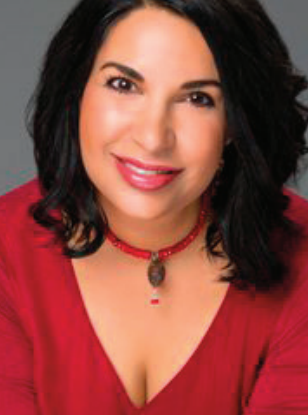Dr. Jyotsna Sahni outlines the causes and symptoms of nightmares and night terrors.
 by Jyotsna Sahni, MD
by Jyotsna Sahni, MD
Everybody has a bad dream from time to time, and everybody has had the experience of a nightmare. They are a universal phenomenon commonly experienced during childhood and may persist throughout adulthood. Frightening dreams that awaken us out of REM sleep, nightmares, are often related to anxiety, stress, and trauma. The peak age for nightmares is between 6–10 years old with boys and girls being equally affected. Over the age of 12 years, girls have more nightmares. While the predominant emotions in nightmares are fear and anxiety, anger, embarrassment, and sadness may also be present.
Nightmare disorder is a clinical diagnosis based on history taking and requires that ICSD-3 criteria be met. Frequency of nightmares should be 3 times a week for at least three months. They can be precipitated by various factors. These could include generalized stress or a specific emotional trauma e.g. a car accident, war, or sexual assault. They are common in the diagnosis of post-traumatic stress disorder (PTSD). They can also be seen in the very common diagnoses of depression and anxiety. Their etiology could be based in a physiological route, however.
For example, certain medications can promote vivid dreams or nightmares. These can include over-the-counter drugs, like melatonin or antihistamines, or commonly prescribed medications, such as beta-blockers for hypertension, dopamine agonists for Restless Leg Syndrome or Parkinson disease, or mirtazapine, which is often used for depression, or off label as a sleeping pill. The relatively new class of sleeping pills, dual orexin agonists (DORA) such as Belsomra, Dayvigo, and Quviviq, are also associated with vivid dreams and nightmares. Sometimes a nightmare could be triggered by cessation of a medication and can be part of its withdrawal phenomenon. For example, nightmares can be seen associated with the withdrawal of benzodiazepines, SSRIs, or alcohol. Untreated sleep apnea, which is more prevalent during the REM cycle of sleep, can be an easily treatable cause of nightmares, and a clue to its presence. A diagnostic polysomnogram or home sleep apnea study is generally not required for the diagnosis of nightmares unless a secondary medical disorder is suspected, such as sleep apnea. Treatment will depend on causation, but may include prazosin, a well-tolerated alpha1-blocker, which can reduce trauma related nightmares.
“Night terrors are most common in children younger than five years of age. The patient may scream, cry and appear panicked. Some patients sit up in their beds with their eyes open and seem to be awake, but are actually in deep slow wave sleep.”
Night terrors, also called sleep terrors, or pavor nocturnus, is a type of non-REM-related parasomnia which is an arousal from stage three sleep (N3). It is most common in children younger than five years of age when there is a higher prevalence of slow-wave sleep. They occur in 5% of children and 1-2% of adults. There may be a genetic component. They tend to be benign, especially in children. They typically occur in the first third to the first half of sleep, when stage three is most prevalent. There are strong signs of autonomic activation, including sweating, fast heart rate, rapid breathing, flushing of the skin, and large pupils. The patient may scream, cry and appear panicked. Some patients sit up in their beds with their eyes open and seem to be awake, but are actually in deep slow wave sleep. They could flail or thrash in bed or get up from bed and sleep walk. They could grow combative and be a danger to themselves or others. Patients may be unresponsive during these episodes and can become more agitated when others try to console them. Unlike nightmares, where there usually is detailed recall of at least part of the scary dream, patients with night terrors typically have partial or complete amnesia for these episodes, which could last 1 to 10 minutes. While dramatic and often very disturbing (especially to the parents), night terrors usually only require reassurance from parents as treatment alone until the child grows out of it.
Night terrors in adults may be brought on by stressors such as psychological pressure or trauma, sleep deprivation, alcohol use, and shift work. Depression, anxiety, PTSD, phobias, obsessive compulsive disorder, and other psychiatric comorbidities should be evaluated in adults. If another sleep disorder or medical problem is suspected, a further work up may be needed. An in-lab polysomnogram with an extended EEG montage may be required to rule out nocturnal seizures. A polysomnogram will also rule out sleep apnea and periodic limb movement disorder which may lead to arousals from sleep into wake. Practicing good sleep hygiene such as a consistent bedtime and wake time may help prevent night terrors along with avoiding alcohol use close to bedtime. Although there are no FDA-approved drugs for non-REM parasomnias like night terrors, benzodiazepines or tricyclic agents are sometimes prescribed off-label. Medications are usually reserved for frequent episodes or those which may pose safety issues.
Read this story about Kelley Richardson’s son and how nightmares were a part of his sleep apnea. https://dentalsleeppractice.com/finns-journey-to-health-started-in-his-dentists-office/

 Dr. Sahni has been in medical practice for 22 years. The first 11 years of her career she was an internist at Canyon Ranch Health resort. Since then, she has practiced sleep medicine exclusively. She opened her own practice, Swan Sleep Medicine, four years ago. When asked why she chose sleep medicine, she often jokes that she could not commit to a single organ. Fortunately, sleep medicine is a combination of pulmonology, cardiology, neurology, and psychiatry. Never boring, sleep medicine requires a multi-disciplinary approach to diagnosis and treatment. To that end, she has been certified in holistic medicine, nutrition, and Ayuvedic medicine as well as Sleep medicine. In general, sleep medicine is a happy field of medicine. When people are sleeping well, they feel more rested, of course, but also have better mood, sharper memories, lower heart risk, and stronger immunity. Dr. Sahni asks that you forgive the pun, but when sleep is improved, it’s like night and day! She evaluates patients in her office as well as administers home sleep tests to look for sleep apnea and insomnia studies to look at brain waves while sleeping. She treats a wide variety of adult sleep disorders. She is taking new patients.
Dr. Sahni has been in medical practice for 22 years. The first 11 years of her career she was an internist at Canyon Ranch Health resort. Since then, she has practiced sleep medicine exclusively. She opened her own practice, Swan Sleep Medicine, four years ago. When asked why she chose sleep medicine, she often jokes that she could not commit to a single organ. Fortunately, sleep medicine is a combination of pulmonology, cardiology, neurology, and psychiatry. Never boring, sleep medicine requires a multi-disciplinary approach to diagnosis and treatment. To that end, she has been certified in holistic medicine, nutrition, and Ayuvedic medicine as well as Sleep medicine. In general, sleep medicine is a happy field of medicine. When people are sleeping well, they feel more rested, of course, but also have better mood, sharper memories, lower heart risk, and stronger immunity. Dr. Sahni asks that you forgive the pun, but when sleep is improved, it’s like night and day! She evaluates patients in her office as well as administers home sleep tests to look for sleep apnea and insomnia studies to look at brain waves while sleeping. She treats a wide variety of adult sleep disorders. She is taking new patients.